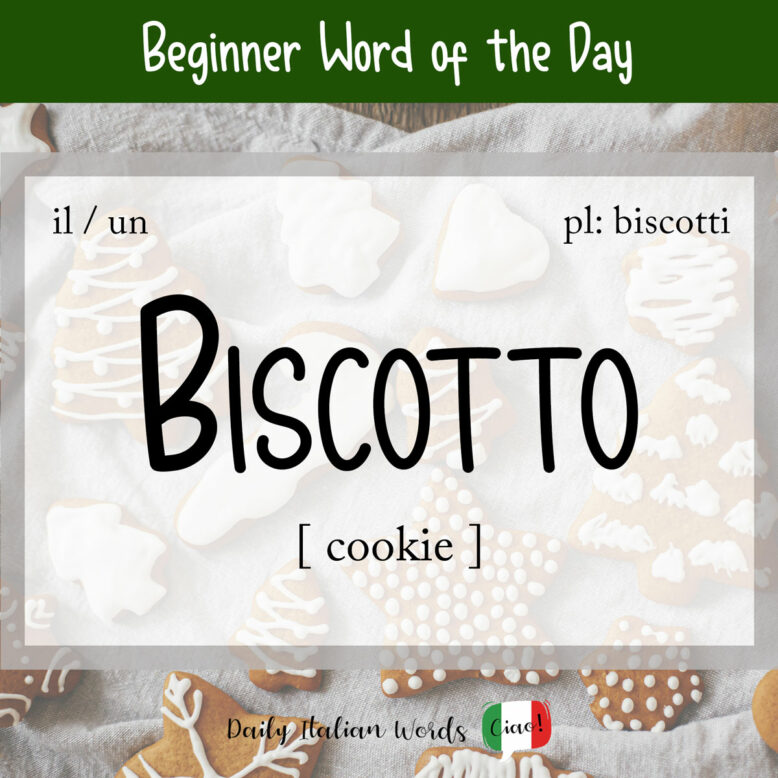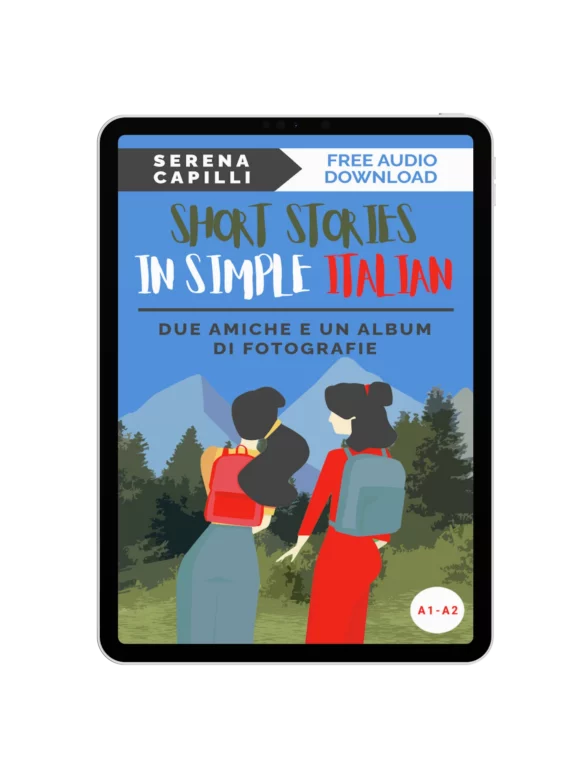The Italian word for cookie is biscotto (masculine, plural: biscotti). As you probably guessed, it shares the same origin as the word biscuit.

The custom of leaving milk (latte) and biscotti for Santa Claus and his reindeer comes from Germany, where it was once customary to decorate the tree not with decorations but with apples, nuts and biscotti made of marzipan.
Babbo Natale si è mangiato tutti i biscotti.
Santa has eaten all the cookies.
However some of these things would mysteriously disappear during the night, which led to the hypothesis that Santa Claus was enjoying a snack or two while delivering his presents!

The word biscotto is made up of two parts – bis (two times) and cotto (baked) – so the literal translation is twice-baked. For example, twice-baked bread is known as pane biscotto in Italian.
There are many different kinds of cookies in existence including:
- amaretto = amaretto biscuit (made with almonds)
- biscotto con gocce di cioccolato = chocolate chip cookies
- gocciola = a drop-shaped chocolate chip cookie
- biscotto di farina integrale = digestive biscuit
- biscotto allo zenzero = ginger biscuit
- biscotto di avena = oatmeal cookie
- frollino / biscotto di pasta frolla = shortbread
- savoiardo = sponge finger, ladyfinger
- crumiro = crumiri biscuit (from the Piemonte region)
- brutti ma buoni = almond or halzelnut cookies (lit: “ugly but good”)
- biscotto al burro = butter cookie
I savoiardi sono i miei biscotti preferiti.
The savoiardi are my favourite cookies.
When we talk about biscotti in English, what we’re actually referring to is a very specific kind of Italian cookie called cantuccio in Italian. You can find out how to make them by following the recipe in the video below!
Heather Broster is a graduate with honours in linguistics from the University of Western Ontario. She is an aspiring polyglot, proficient in English and Italian, as well as Japanese, Welsh, and French to varying degrees of fluency. Originally from Toronto, Heather has resided in various countries, notably Italy for a period of six years. Her primary focus lies in the fields of language acquisition, education, and bilingual instruction.


